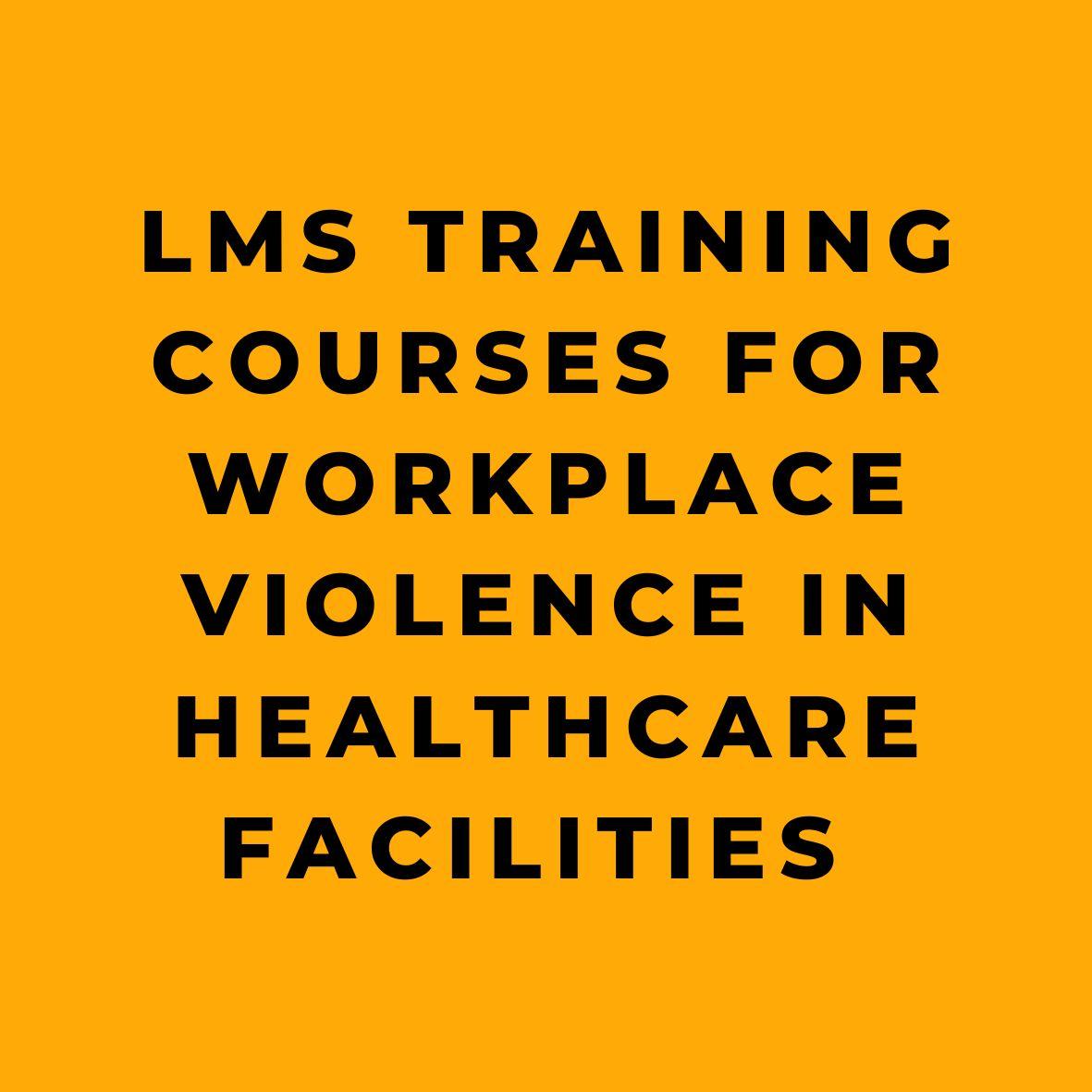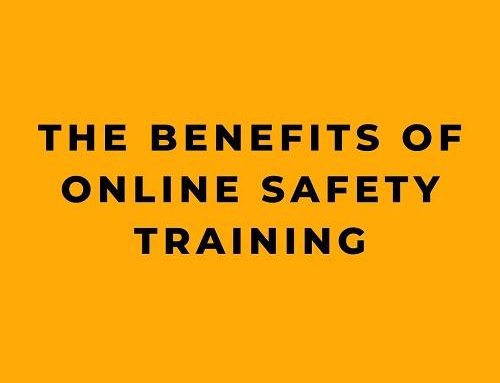This article is about workplace violence. This is an important topic that we need to address in order to keep ourselves and our coworkers safe on the job. Today, we’ll be reviewing the major points of information presented in our LMS training courses for Workplace Violence in Healthcare Facilities, so that you can better prepare yourself and your team to handle situations of violence in the workplace.
First and foremost, let’s address the fact that some people believe that conflict on the job is normal. But where do we draw the line? Most incidents of violence begin as just a disagreement between co-workers. All too often, these arguments can escalate into insults, challenges, and even threats. Bystanders often ignore these confrontations, dismissing them as “personality conflicts”, but eventually “push comes to shove”, and the “personality conflict” becomes physical. Once they become violent, these incidents can result in serious injuries… even death. So how much conflict is too much?
OSHA requires that employers provide “a place of employment free from recognized hazards that are likely to cause death or serious physical harm to employees.” Any type of “workplace violence” should be considered one of those hazards. It is stressful, bad for morale, and downright dangerous. We have to take steps to prevent any violence in the workplace.
When it comes to violence, the media always latches onto the headline makers, like “murder”. However, other types of workplace violence occur far more frequently. Before we go any further, we need to define the word “violence”. The first thing that comes to mind is a physical confrontation. But violence also includes verbal and emotional attacks. The psychological harm caused by threats, verbal abuse, and intimidation can be as serious as any physical injury.
There are several sources of violence in the workplace, including “outside threats” created by people who commit acts of violence but aren’t employed by your company. Customers or vendors may seek revenge for some perceived wrongdoing, and terrorists could even target your business to “set an example”. In healthcare environments, patients or their families can sometimes become hostile and assault medical personnel. The workplace isn’t immune to incidents of “domestic violence” either. Another type of outside threat is “commercial crime”. A robber can enter a business looking for some “quick cash”, but if things go wrong, people can get hurt, even killed. The workers at greatest risk from commercial crime are those who exchange money with the public, work alone or in small numbers, or work late-night or early-morning hours.
Another source of workplace violence is “inside threats”. All organizations are at risk from aggressive or violent people who are working in their facilities. We’re not talking only about disgruntled employees who take out their frustrations on their supervisors. Disagreements or personality conflicts between coworkers are the most common causes of workplace violence. They involve people we know and work with. Fortunately, violence rarely happens without warning. Although we can’t predict when and where workplace violence will strike, there are usually “warning signs”, “red flags” that tell us to proceed with caution.
An individual may suddenly become irritable and prone to emotional outbursts or mood swings, get defensive and over-react to comments or criticism. These are “warning signs” of potential violence. They may also start complaining frequently, or blame others for their problems, talk about “getting back” at someone or be fascinated by other incidents of violence. These can be warning signs as well. Other “red flags” include being late or absent more often than usual or disappearing during the workday. These can be indications that someone may be having trouble coping with their problems, becoming careless, reckless, or having accidents on the job, suggesting that they may be frustrated or distracted.
But remember, these types of warning signs don’t always indicate future violence. Everyone has “bad days” and may blow off a little steam now and then. What you really need to watch for is when these start to lead to aggressive or violent behavior.
It’s important to understand that “aggressive behavior” doesn’t just mean causing physical harm. It can be any attempt to hurt or demean someone. Aggressive behavior includes threats, sexual harassment, and verbal abuse. There are basically three types of threats: “veiled”, “conditional”, and “direct”. Veiled or “hidden” threats suggest that a person intends to do harm, but the aggressive individual doesn’t actually “spell out” what they plan to do. Conditional threats always are used to intimidate people. Their intent is to make a person do something or to prevent them from doing it. Direct threats always come through loud and clear. With a direct threat, a person declares their intention to commit an act of violence.
Even though we don’t usually think of it this way, “sexual harassment” is also a form of violence, and women aren’t the only victims. “Sexual harassment” is defined as repeated, unwanted behavior based on an individual’s sex or sexual identity, whether they are male or female. Sexual harassment includes “sexist” as well as sexual remarks, any unwanted physical contact, sexual advances, hazing or practical jokes based on an individual’s gender or sexual orientation, and assigning someone menial or demeaning tasks because of their gender. It’s not acceptable to treat anyone differently because of their gender or sexual orientation. Sexually explicit language or behavior of any kind has no place in the workplace.
Verbal abuse is another type of aggressive behavior and can include bullying, mocking, intimidation, and insults. This shouldn’t be dismissed as someone “just being mean”. There is no excuse for using language or behavior to hurt someone’s feelings. While it’s important that any type of aggressive behavior be nipped in the bud, some people don’t want to get anyone “in trouble” by reporting these kinds of incidents. They don’t want to be seen as a “tattle-tale” or would like to think that the problem will just “go away” on its own. The fact is, making a report is your best opportunity to solve the problem once and for all. It’s a chance for a troubled person to get the help they need, and making a report can often prevent a more serious incident from occurring.
So, it’s essential to report any aggressive behavior you experience or witness to your supervisor, your Human Resources Department, or your company’s security personnel. Your company may also have an independent hotline or Employee Assistance Program that allows you to make reports confidentially. Local law enforcement agencies should be notified of incidents that involve threats of violence or physical assaults. Regardless of who you report the incident to, make sure they document it for future reference.
Another situation that you should report immediately is the presence of a weapon in your facility. Even a licensed, authorized weapon can be very dangerous. If you see one, tell your supervisor, security personnel, or an HR representative about it immediately! You should also report any unfamiliar or unauthorized people that you see. It’s better to be safe than sorry! If it turns out they have been approved to be in the facility, there’s no harm done.
Getting involved with violence in any way, such as “fighting”, can have serious consequences. By definition, any attempt to cause physical injury or a physical threat to do bodily harm is an “assault”. Even if you aren’t the one who starts it, you could get injured, suspended or fired, possibly even arrested or sued by your assailant. Try to avoid arguments, and never get caught up in a shouting match…
Taking proactive steps to prevent workplace violence is essential for healthcare workers. As we’ve discussed, getting involved with violence can have serious consequences. That’s why our training products on “Workplace Violence in Healthcare Facilities” provide healthcare workers with the information they need to recognize potential violence hazards, prevent aggression if possible, and respond to it effectively when necessary. With our comprehensive training, healthcare workers can feel confident in their ability to prevent and handle violent situations in the workplace.
Are you a healthcare worker concerned about workplace violence? Thousands of assaults occur every week in hospitals, urgent care clinics, nursing homes, and doctors’ offices across the country, leaving employees with physical and emotional trauma, and even death. Don’t wait for a tragedy to happen, take proactive steps to prevent it with our training products on “Workplace Violence in Healthcare Facilities”.
Our LMS training courses provide healthcare workers with the information they need to recognize potential violence hazards, prevent aggression if possible and respond to it effectively when necessary. We also offer a range of options including new “Micro-Learning” and full-length online courses, DVDs, and interactive CD courses. All of our products cover the most critical topics that are integral to employees’ understanding of these issues.
Topics covered in our products include the history of violence in healthcare facilities, OSHA guidelines for preventing violence, identifying and controlling the potential for violence, employee education and training, responding to violence, and more. All “Workplace Violence in Healthcare Facilities” products are available in English, ensuring that employees have access to critical information.
Our online courses are designed to keep employees engaged and involved in the learning process. We use full-motion HD video filmed in real-life workplace settings and interactive quiz questions to ensure that employees are fully engaged in the learning process and retain more of the information they have learned.
One of the best features of our online courses is the incorporation of remediation training. If a trainee misses a question on a quiz, they are presented with the course content that explains the topic again. This means that training time is reduced and the courses are much more efficient and effective.
Training activity in our LMS training courses is tracked and recorded along with test scores, making it easy for managers to monitor their employees’ progress. We offer a range of different types of online safety courses, including adaptive learning courses, micro-learning courses, full-length interactive courses, and video streaming (VOD) courses. Our libraries contain over 170 courses on important topics such as regulatory compliance, human resource topics, and general safety topics.
Don’t let workplace violence be a risk to you and your colleagues. Invest in our training products on “Workplace Violence in Healthcare Facilities” and take proactive steps to prevent violence from occurring. With our comprehensive and engaging courses, you’ll have the knowledge and skills needed to recognize, prevent, and respond to potential violence hazards in your workplace. So, what are you waiting for? Choose our training products and stay safe and secure in the workplace.










